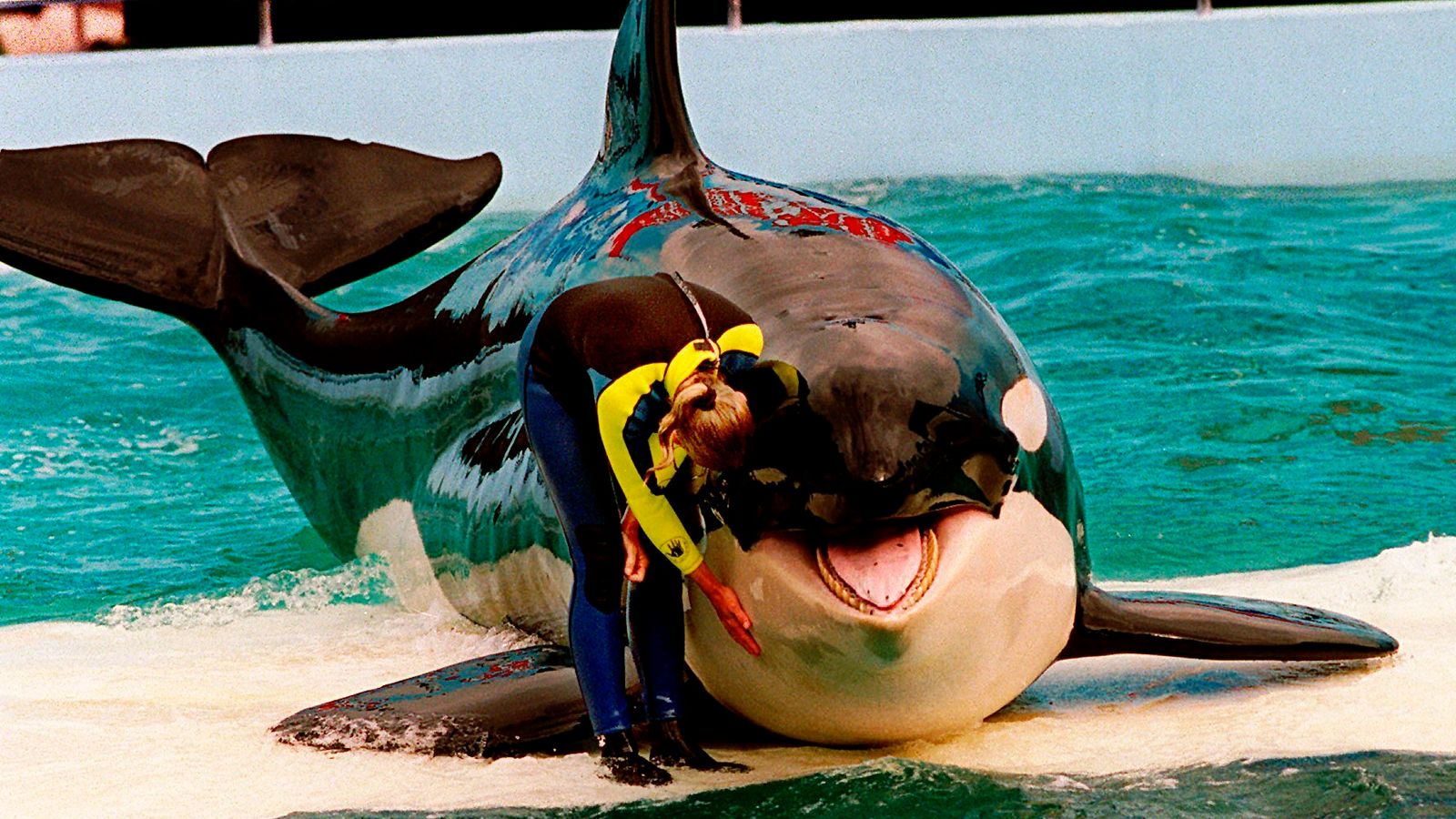An orca may return to freedom in the Pacific Northwest after more than five decades in captivity entertaining crowds in the southern US state of Florida.
Lolita – also known as Tokitae – was around four years old when she was captured in the summer of 1970 during a period of deadly orca roundups, and has since been based at the Miami Seaquarium.
But an unlikely coalition formed involving the theme park’s owner, Eduardo Albor, animal rights group Friends of Toki and NFL owner-philanthropist Jim Irsay.
They announced plans to free Lolita in a news conference on Thursday.
“I’m excited to be a part of Lolita’s journey to freedom,” Indianapolis Colts owner Mr Irsay said. “I know Lolita wants to get to free waters.”
Lolita was captured in 1970 in Puget Sound – an inlet of the Pacific Ocean located in the northwestern US state of Washington – and was bought by a Miami Seaquarium veterinarian for about $20,000 (£16,000).
She performed for decades until last year when the theme park announced it would no longer stage shows with her in an agreement with government regulators.
She is the second-oldest living orca whale after one called Ocean Sun, believed to be her mother, who continues to swim free with other members of their clan in the waters between Washington state and Canada.
Ocean Sun is over 90 years old, which has given advocates for Lolita’s release hope that she could live for many years to come in the wild.
Lolita will not be freed immediately, however, with hurdles still to overcome.
In a plan set to take up to two years, she will be transported by plane to an ocean sanctuary in the waters between Washington state and Canada where trainers and veterinarians will teach her how to catch fish inside a large net.
She will also have to build up her muscles. Orcas typically swim around 100 miles (160 kilometres) per day, but she has been living in a tank that measures 24m by 11m and is 6m deep.
“She was 4 when she was taken, so she was learning to hunt. She knows her family song,” said Raynell Morris, an elder of the Lummi Indian Tribe in Washington who also serves on the board of Friends of Toki. “She’ll remember, but it will take time.”
Lolita would remain under 24-hour care until she acclimatises to her new surroundings, and caretakers at the Seaquarium are already preparing her for the journey, officials said.
Read more:
Humpback whale cut loose from shark net on Australia’s Gold Coast
Whale offering warnings about climate change
The deadly whale roundups of the 1960s and 70s have had a lasting impact on a distinct group of endangered, salmon-eating orcas that are known as the “southern resident killer whales” and spend much of their time in the waters between Washington and Canada.
The roundups reduced the population by around 40% – at least 13 orcas died during the roundup, while 45 were taken to theme parks.
Just 73 remain in the southern residence population, which is made up of three “pods”, according to the Centre for Whale Research. That’s just two more animals than in 1971.
Activist groups, including the People for the Ethical Treatment of Animals (PETA), have campaigned for many years for Lolita to be released into controlled setting, and protests often take plan along the road towards the Seaquarium.
Eduardo Albor, owner of The Dolphin Company which operates the Miami Seaquarium, said one of the reasons his company purchased it in 2021 was to help Lolita.
“It has always been our commitment at The Dolphin Company that we place the highest priority on the wellbeing of the animals above all else” he added.
“Finding a better future for Lolita is one of the reasons that motivated us to acquire the Miami Seaquarium.”
Miami-Dade county mayor Daniella Levine Cava called the relocation plan historic.
“So many have hoped and prayed for this result for many, many years,” she said.






